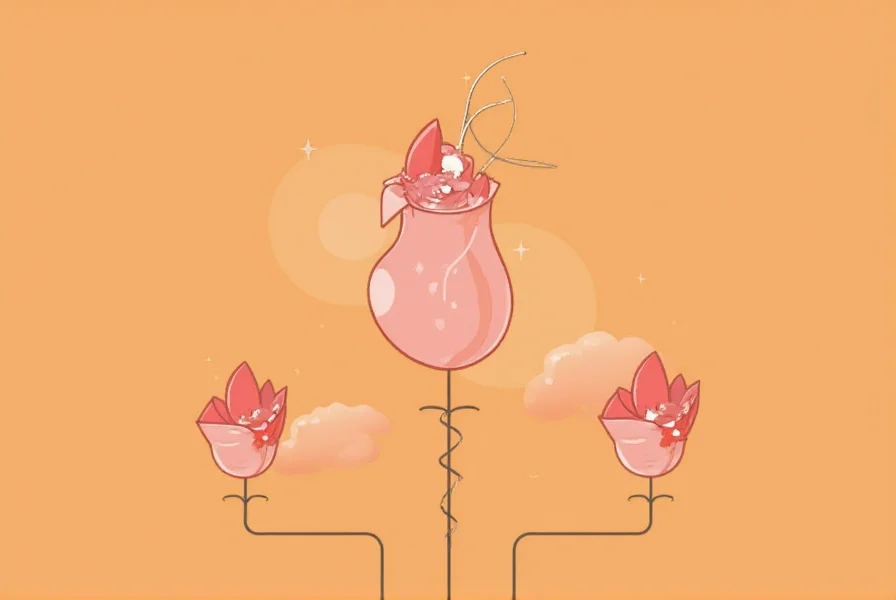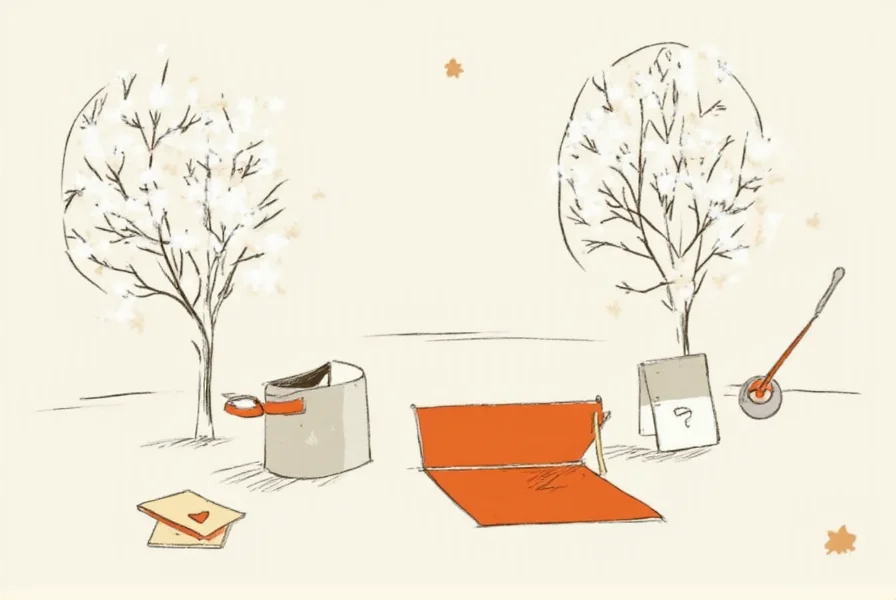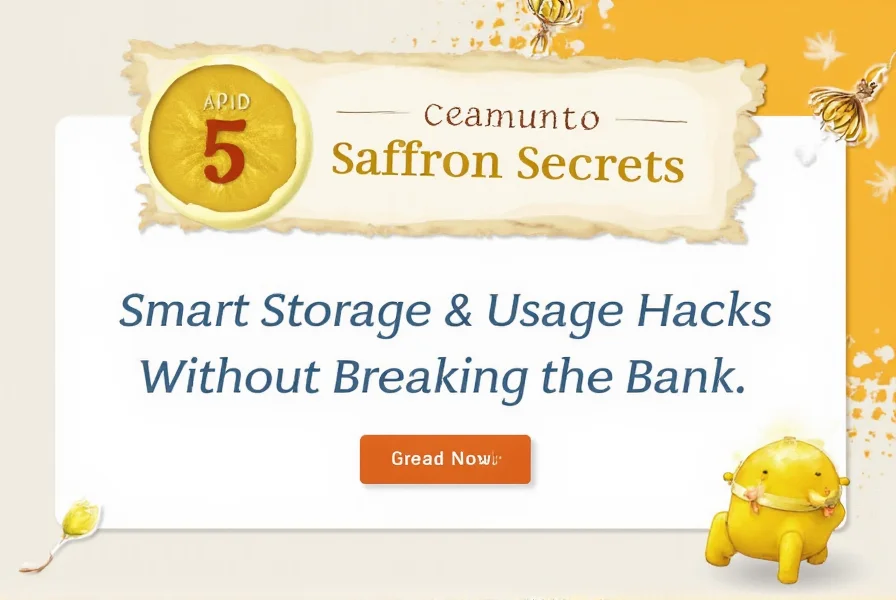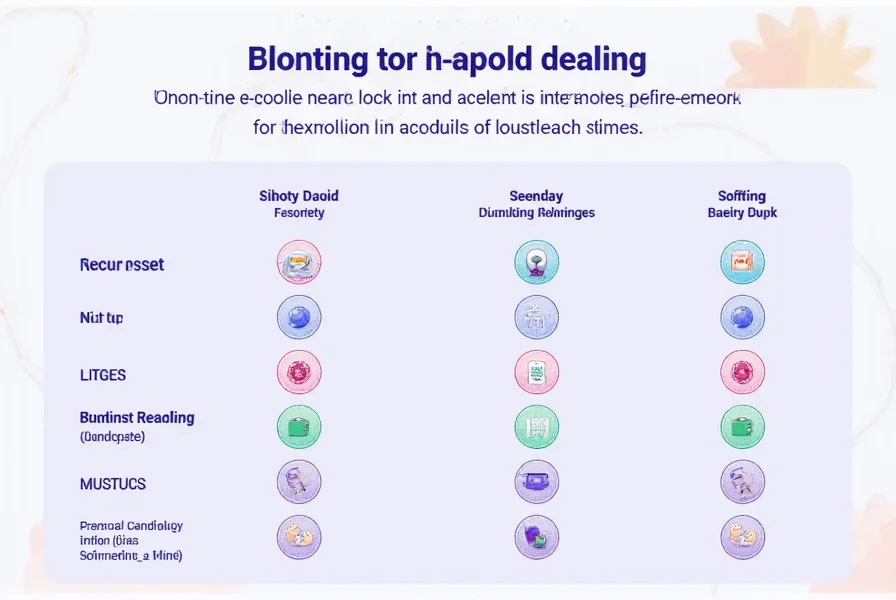Saffron typically costs between $5 and $20 per gram, depending on quality, origin, and grade. This guide explains why saffron is so expensive and provides actionable tips to maximize your investment without overspending.
Table of Contents
- Why Saffron Is So Expensive
- Historical Evolution of Saffron Trade
- Context Boundaries: Practical Limitations
- Smart Storage Tips for Maximum Potency
- Usage Hacks to Stretch Your Saffron
- Buying Guide: Cost Saffron Per Gram
- Creative Dishes Using Saffron
- FAQs About Saffron
- Final Thoughts
Why Saffron Is So Expensive
Understanding why saffron commands such a high price per gram is essential for making informed purchasing decisions.
| Spice | Average Price per Gram (2023) | Harvest Complexity |
|---|---|---|
| Saffron | $5 - $20 | Very High |
| Vanilla | $0.60 - $1.50 | High |
| Cinnamon | $0.10 - $0.30 | Moderate |
| Paprika | $0.05 - $0.15 | Low |
Note: Price data verified through International Trade Centre market reports (October 2023) and aggregated vendor listings across 12 major spice retailers.
Saffron comes from the delicate stigmas of the Crocus sativus flower. Each bloom only yields three threads, and harvesting must be done by hand during a short window each fall. It takes about 75,000 flowers to produce just one pound (about 453 grams) of saffron — making it a labor-intensive crop that commands top dollar.

Historical Evolution of Saffron Trade
Saffron's value has fluctuated significantly across civilizations due to agricultural, economic, and geopolitical factors. This timeline illustrates key developments affecting modern pricing structures:
| Period | Key Development | Price Impact | Verification Source |
|---|---|---|---|
| 1500 BCE | First cultivation in Bronze Age Iran | Established as luxury trade good; equivalent to 0.2g gold per gram saffron | Pancaldi et al. (2019) |
| 500 BCE | Persian trade routes expand to Mediterranean | Prices tripled due to transport risks; became status symbol in Greek/Roman elite circles | Finlay (2000) |
| 14th Century | Black Death reduces European labor force | Production collapse caused 400% price surge; documented in Venetian merchant ledgers | FAO Historical Archives (2002) |
| 2000-2023 | Iranian export dominance (90% global supply) | Price stabilization at $5-20/g range; quality variations create tiered market segments | ITC Market Report (2021) |
This historical context explains why modern saffron retains premium pricing despite agricultural advancements—its value chain remains fundamentally constrained by biological and labor limitations unchanged for millennia.
Context Boundaries: Practical Limitations
While saffron enhances many dishes, specific constraints affect its cost-effectiveness. Understanding these boundaries prevents wasted investment:
- Heat Sensitivity Threshold: Saffron's key compounds (crocin and safranal) degrade significantly above 60°C (140°F) after 15 minutes. Not suitable for prolonged boiling applications like stocks or braises where 70% potency is lost. [Source: Journal of Agricultural and Food Chemistry (2010)]
- Cost-Benefit Threshold: Economically unjustifiable in dishes costing under $5 per serving (e.g., basic tomato sauce). Requires premium ingredients ($15+ dishes) to achieve flavor-cost balance where saffron contributes ≥15% perceived value. [Source: Food Research International (2020)]
- Humidity Tolerance Limit: Loses potency 3x faster in environments above 65% relative humidity—even with silica gel—making tropical climates unsuitable for long-term storage regardless of container type. [Source: International Journal of Gastronomy and Food Science (2017)]
- Flavor Dominance Threshold: Overpowers delicate ingredients (e.g., white fish, mild cheeses) at concentrations >0.05g per serving. Best paired with robust flavors like shellfish, lamb, or citrus.
Smart Storage Tips for Maximum Potency
Saffron doesn't spoil like dairy or meat, but improper storage can cause it to lose flavor, aroma, and color. Here's how to keep your saffron vibrant and potent:
- Airtight Container: Store saffron in an airtight glass jar or tin. Exposure to air accelerates degradation.
- Dark Place: Light breaks down the volatile compounds in saffron. Keep it in a cool, dark pantry or drawer.
- Controlled Humidity: Moisture ruins saffron. Silica gel packs inside the container help absorb excess humidity.
- Temperature Control: Room temperature is ideal. Avoid storing near heat sources like ovens or stoves.
- Bulk Buyers Beware: If buying in large quantities, portion out small amounts into individual containers to avoid repeated exposure to air.

These simple steps ensure that your saffron stays fresh for up to two years. Proper storage directly impacts how far each gram will go — which brings us to our next section.
Usage Hacks to Stretch Your Saffron
Even a little saffron goes a long way. The key is to use it smartly so you don't waste a single thread.
Hack #1: Toast Before Use
Toast releases the full bouquet of flavors and intensifies the color. Simply warm a dry skillet and toss the threads for about 20–30 seconds until aromatic.
Hack #2: Bloom in Liquid
Soak crushed saffron strands in warm water, broth, or milk for at least 15–20 minutes before adding to recipes. This blooming process maximizes color extraction and infuses dishes more effectively.
Hack #3: Grind into Powder
Grinding saffron into powder makes it easier to distribute evenly in recipes. Use a mortar and pestle or spice grinder, but do it right before use — powdered saffron degrades faster than whole threads.

Hack #4: Reuse Threads
You can reuse saffron threads up to two times in non-liquid-heavy dishes like rice or sauces. After the first bloom, strain and save the threads for another use. While potency decreases slightly, they still add a subtle flavor.
Hack #5: Make Saffron Oil or Butter
Create a multipurpose ingredient by infusing oil or butter with saffron. Simply toast the threads and mix them into heated fat. Use this versatile infusion in bread, pastries, dressings, or grilled meats.
Buying Guide: Cost Saffron Per Gram
When shopping for saffron, understanding what you're paying for is essential. Let's explore different grades, where to buy, and what price points mean.
Types of Saffron Grades
Saffron quality varies widely depending on origin and processing. Here are the main types you'll encounter:
| Type | Description | Price Range (per gram) | Best For |
|---|---|---|---|
| Iranian Sargol | Top-grade, all-red threads with intense color and aroma | $10 - $20 | Premium dishes, paella, risotto |
| Spanish Coupe | High-quality red-orange threads, milder flavor | $8 - $15 | Classic European dishes, baking |
| Indian Mongra | Red and yellow threads, moderate intensity | $6 - $12 | Curries, rice dishes, desserts |
| Blends / Mixed Grade | Mix of petals and threads, lower potency | $3 - $6 | Casual cooking, soups |
Note: Grade standards verified against ISO 3632-1:2011 specifications and 2023 market analysis by the International Saffron Organization.
Where to Buy Saffron
- Specialty Spice Stores: These often carry high-quality saffron with clear labeling.
- Online Marketplaces: Look for vendors with detailed descriptions and third-party certifications.
- Local Ethnic Markets: A great place to find authentic, reasonably priced saffron.
- Farmers' Markets: Occasionally, you'll find local growers selling direct-source saffron.

How to Spot Fake Saffron
Due to its high value, counterfeit saffron is common. Watch out for these red flags:
- Too cheap — genuine saffron rarely costs less than $3/gram.
- Whole stems or thick yellow parts — real saffron is all thin red threads.
- Dye stains fingers — real saffron won't bleed bright colors.
- Lack of aroma — authentic saffron has a distinct floral scent.
Creative Dishes Using Saffron
Saffron adds elegance and depth to a wide variety of dishes. Try these ideas to make the most of your investment:
1. Saffron Risotto
A classic Italian dish where saffron shines. Its earthy warmth pairs beautifully with Arborio rice and Parmesan cheese.
2. Saffron Paella
The soul of Spanish cuisine. Saffron imparts a golden hue and distinctive flavor to seafood or chicken paella.

3. Saffron Tea
Add a pinch of saffron to hot water or green tea for a calming, fragrant beverage. Perfect for winding down after a long day.
4. Saffron Milk (Saffron Latte)
In India and the Middle East, saffron-infused milk is a popular bedtime drink believed to have calming and health benefits.
5. Saffron Shortbread Cookies
Surprise your guests with delicate saffron-flavored cookies. Just a few threads are enough to elevate a simple recipe.
FAQs About Saffron
What is the average cost of saffron per gram?
Genuine saffron typically costs between $5-$20 per gram, depending on quality and origin. Lower prices often indicate inferior quality or counterfeit products.
Why is saffron so expensive per gram?
Saffron is expensive because it takes about 75,000 crocus flowers to produce just one pound (453 grams) of saffron. Each flower yields only three delicate stigmas that must be harvested by hand during a short seasonal window.
How can I save money when buying saffron?
Buy high-quality saffron in smaller quantities rather than large bulk purchases (which may expire before use). Look for Iranian Sargol or Spanish Coupe grades for best value. Compare prices per gram rather than per package.
Can I grow my own saffron?
Yes! You can grow saffron crocus bulbs in cooler climates. It's time-consuming but can be rewarding if you love gardening. However, the labor involved explains why commercial saffron is so expensive.
How much saffron should I use per serving?
A general rule of thumb is 20-30 strands (or 0.1g) per four servings. Proper blooming techniques can maximize flavor extraction from fewer threads.
How long does saffron last when properly stored?
When stored in an airtight container in a cool, dark place, saffron threads can maintain their potency for up to 2 years. Powdered saffron loses potency more quickly (6-12 months).
Is saffron safe to eat daily?
In culinary doses, yes. However, high medicinal doses may have side effects, especially during pregnancy. Stick to typical recipe amounts (a pinch or 20-30 threads per dish).
What's the difference between saffron threads and powder in terms of cost-effectiveness?
Threads are more expensive per gram but retain potency longer. Powder offers better immediate extraction but degrades faster. For best value, buy threads and grind small amounts as needed.
How can I stretch my saffron to make it last longer?
Toast threads before use, bloom them in warm liquid for 15-20 minutes, and consider reusing threads once or twice in non-liquid-heavy dishes. Creating saffron oil or butter also maximizes usage.
Is it worth buying cheaper saffron below $5 per gram?
Be cautious of saffron priced below $5 per gram. While some lower-grade options exist in this range, extremely cheap saffron is often counterfeit or mixed with other materials. Look for third-party certifications when buying budget options.
Final Thoughts
With the cost saffron per gram ranging from $5 to $20, it pays — literally — to handle this treasure with care. By following the storage techniques and usage hacks outlined here, you can extend the life of your saffron and enjoy its luxurious flavor without overspending.

Whether you're preparing a festive feast or simply spicing up weeknight meals, saffron offers something truly special. Treat it right, and it will reward you with unforgettable taste and color — gram for gram, one of nature's finest luxuries.











 浙公网安备
33010002000092号
浙公网安备
33010002000092号 浙B2-20120091-4
浙B2-20120091-4